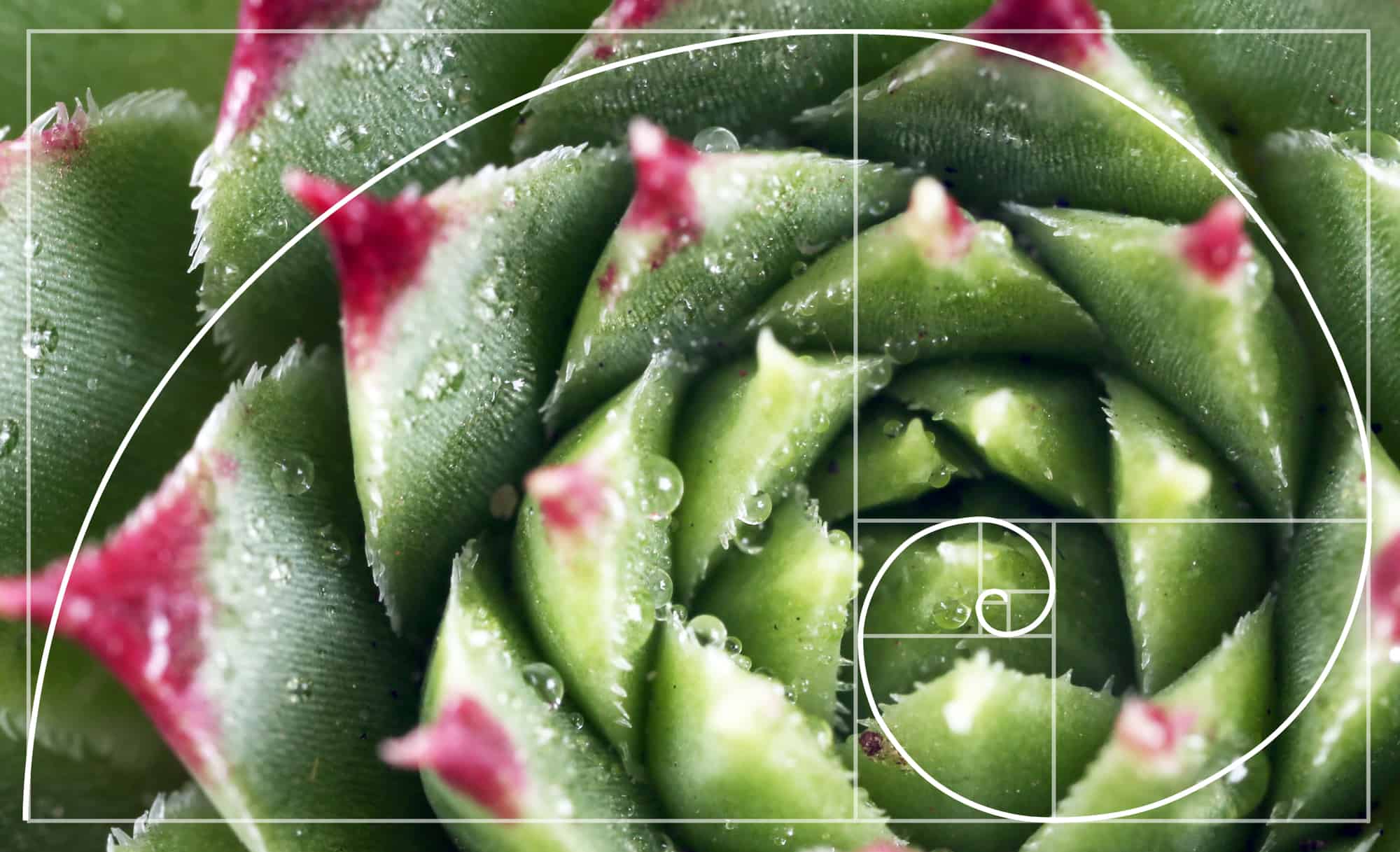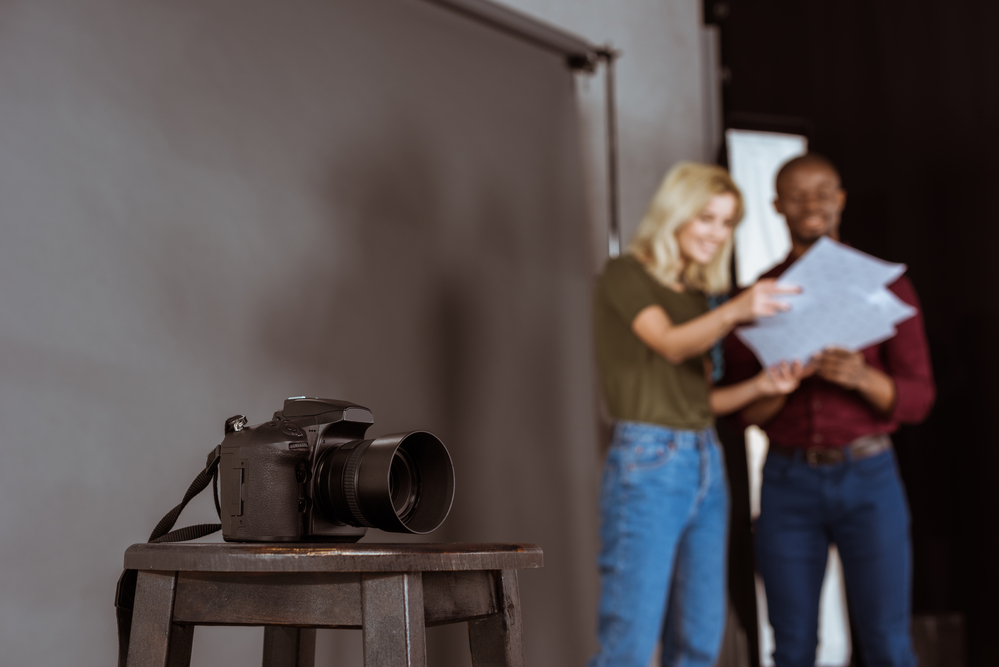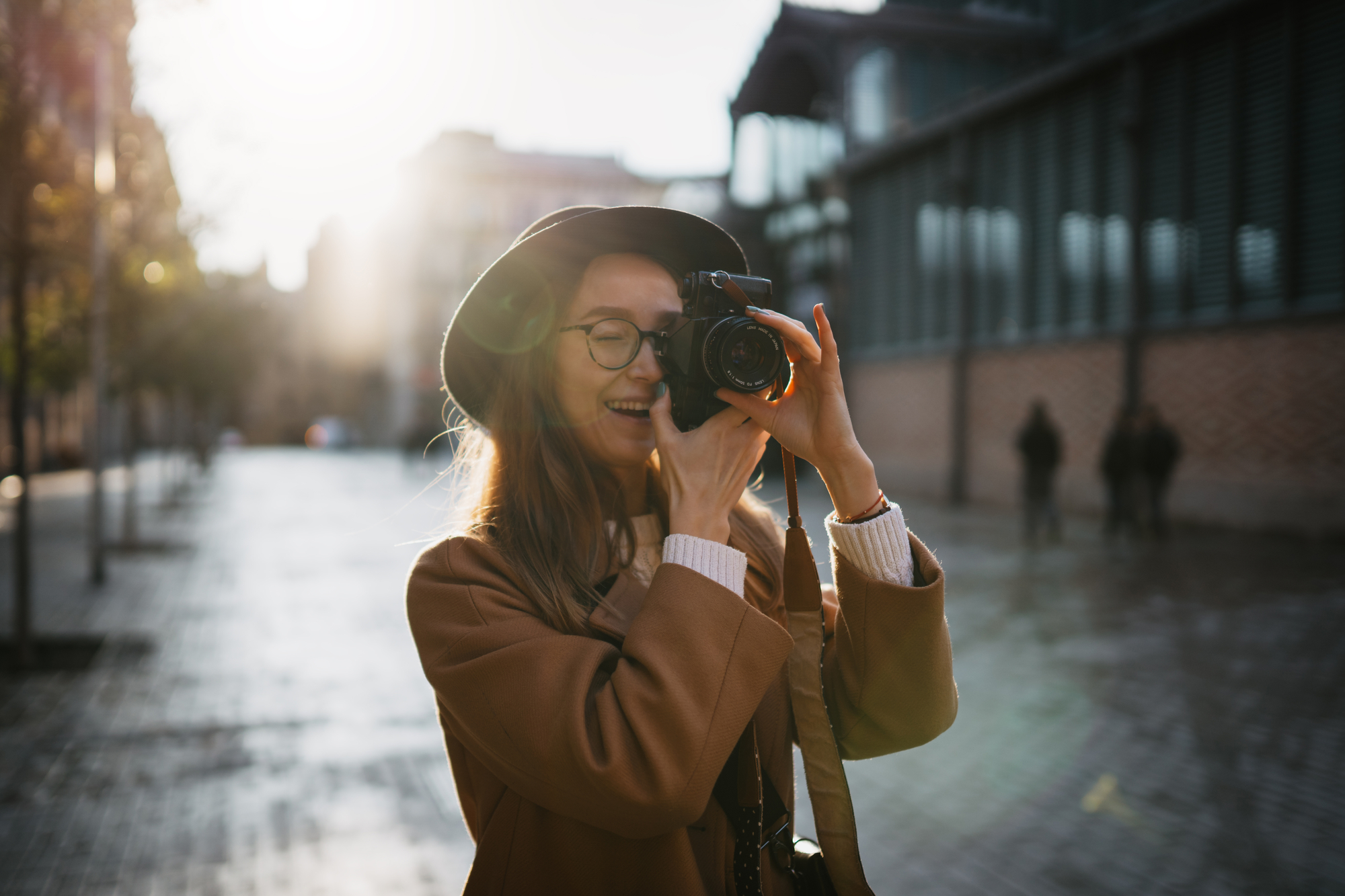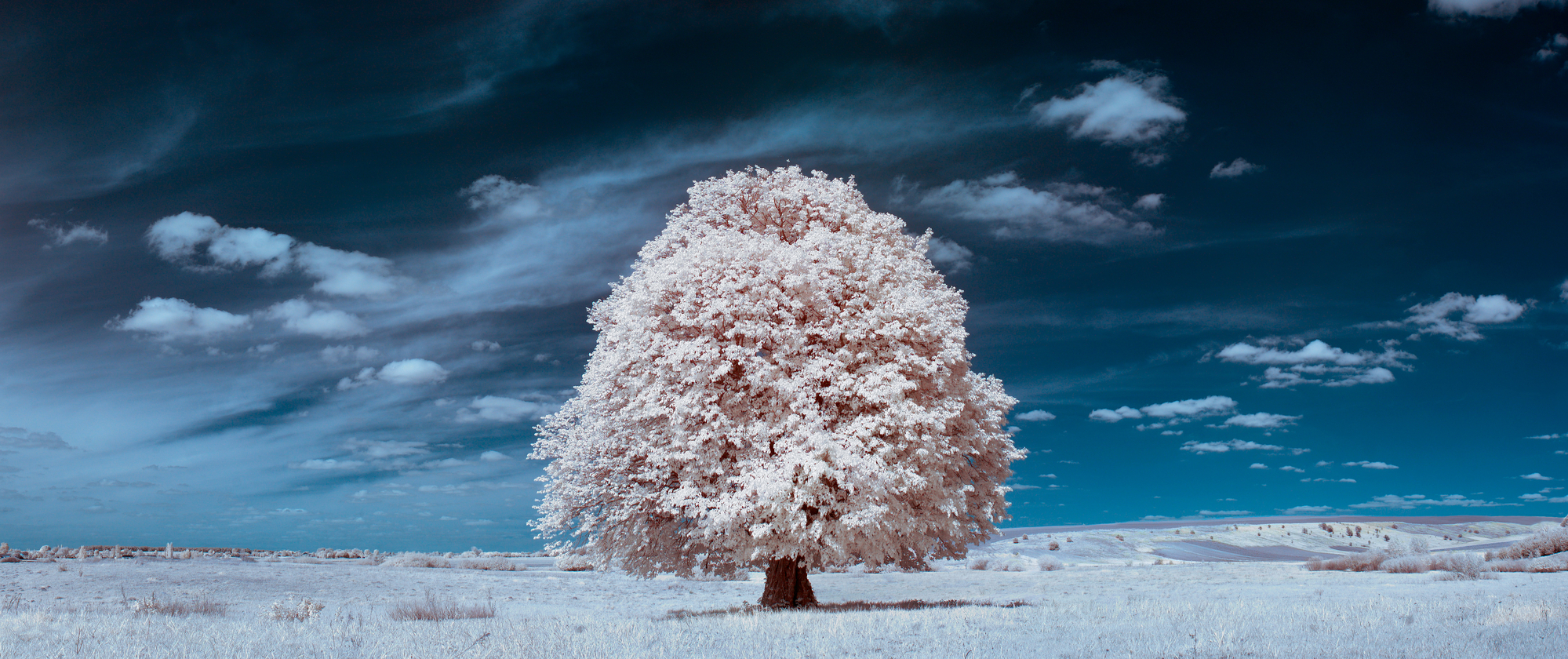What Is the Golden Ratio?
The golden ratio is the mathematical ratio. The objects, shapes, and forms that reflect this ratio are widespread in natural surroundings, from a shell and an ocean wave to human body parts. It can also be found in many classical paintings, works of art, and even brand logos. To understand how this ratio looks and works, you need to imagine a rectangle. If you cut a square in this rectangle, the leftover rectangle will have the same proportions as the initial rectangle. To express this mathematically, the ratio of the longer side of the rectangle and the shorter side of the rectangle equals the sum of longer and shorter sides divided by the longer side. Both proportions equal the golden number, which is around 1.618 (the actual number is irrational, meaning it contains an infinite number of digits after the decimal point). You can separate the rectangle endlessly further and get more complicated shapes based on the golden ratio. This juxtaposition of several rectangles is called the Golden ratio diagram.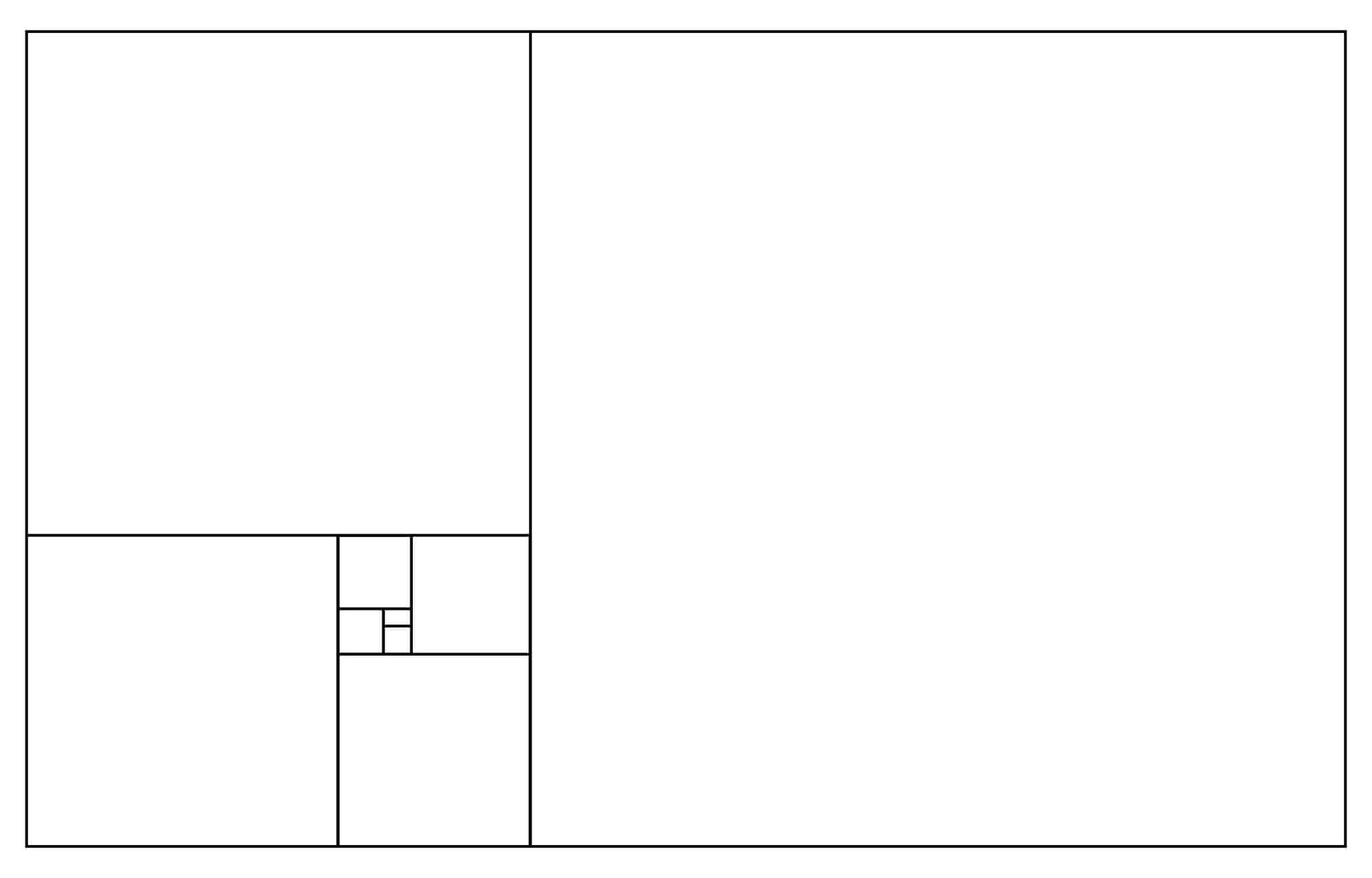
Brief History of the Golden Ratio in Arts
Humanity has been using the golden ratio since ancient times. Egyptian pyramids were built with it, and it was also used by architects in Ancient Greece for building temples. The Great Mosque of Kairouan was established in 670 AD with the usage of the golden ratio in the architectural project. A Renaissance mathematician Luca Pacioli wrote a book on the golden ratio and geometry, called ‘Divine proportion’ and published in 1509. The book was illustrated by Leonardo da Vinci and eventually gained popularity way beyond academic circles. Da Vinci’s name is a common association with the golden ratio in general, but actually his ‘Vitruvian Man’ doesn’t exactly match the proportion. Michelangelo’s ‘The Creation of Adam’, Raphael’s ‘The School of Athens’, and Botticelli’s ‘The Birth of Venus’ are often named as the greatest examples of implementing golden ratio in paintings. What’s more, Salvador Dalí used the golden ratio for his famous artwork ‘The Sacrament of the Last Supper’. Nowadays, the golden ratio is widely used in the design. Many brands create their logos and even business cards according to the golden ratio in hopes of appealing to their audiences on an intuitive, subconscious level with naturally perfect proportions. Shapes based on the golden ratio help them arrange highlights in their design projects. For example, the Pepsi logo uses the golden ratio. Similarly to design, the golden ratio is a popular way to align elements with your composition in photography.How to Use the Golden Ratio in Your Photos
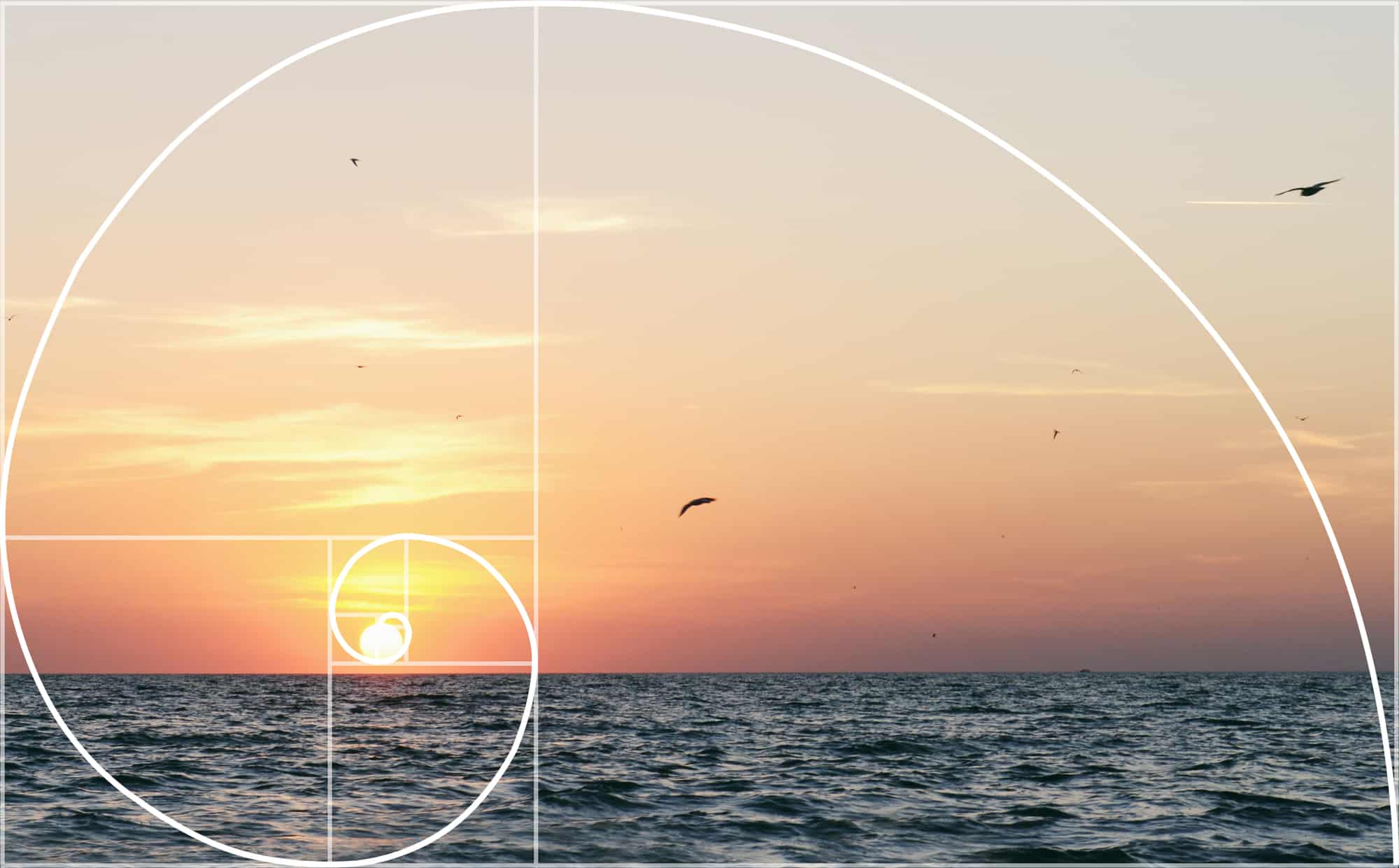 1. Set the dimensions of your shot according to the golden ratio
1. Set the dimensions of your shot according to the golden ratio
The easiest way to use the golden ratio is to determine the dimensions of your frame accordingly. The proportion is 1:1.618, meaning that if your long side is 2000 pixels, your other side will be around 1236 pixels wide.
Then you can break your image into two columns with the use of the golden ratio and place the object or subject along this intersection line. You can even experiment with the layout while editing, making sort of collages with the proportions.
2. Use the Golden Spiral to draw attention
The Golden Spiral, also known as the Fibonacci Spiral, is basically a spiral line ‘drawn’ upon the Golden ratio diagram (overlapping of several golden ratios) which kind of looks like a shell. It uses the Fibonacci sequence of numbers in its patterns. A human’s eye is naturally led to the center of this spiral line, meaning that you can use the trick in your photography composition. Apart from placing your subject ‘in the shell’, you can arrange interesting things along the spiral to naturally guide your viewers’ attention. What’s more, you can organize your negative space according to the spiral, placing interesting things and objects within the line and leaving other parts of your image empty. The way to compose your images according to this rule is to simply fit in the most detailed part of the scenery into the ‘heart’ of the Fibonacci Spiral. Leave empty space in about half of the shot so as to lead the eye to the most detailed part of the photograph by using an imaginary spiral to guide the eye.